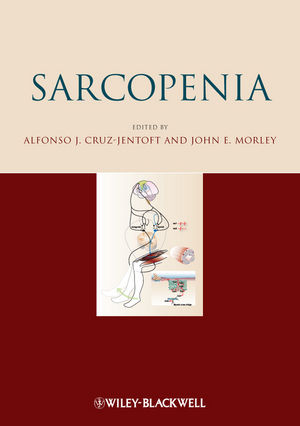Description
Sarcopenia is a major therapeutic challenge and a public health priority in both the US and Europe. More than two
decades after the word was first used to define a distinct clinical condition, the definition of sarcopenia remains
open for discussion,nd its clinical relevance is still not fully understood. This book provides some answers. It is a
valuable addition to the existing literature, providing a one-stop shop for state-of-the-art information on a topic of
particular relevance for geriatricians and all those who care for the older population.
Sarcopenia has serious health consequences of sarcopenia in terms of frailty, disability, morbidity, and mortality.
Identifying high risk groups of older people is straightforward, but making a diagnosis is more difficult. Having
addressed the definition of sarcopenia the book therefore goes on to discuss current open questions that concern the
clinical management of the condition. Chapters cover nosology, pathophysiology, clinical identification, and
treatment: for example, is sarcopenia a normal part of the ageing process? When does it become a disease state? Is it
only a morphologic or functional abnormality, or is it an age-related disease? Epidemiological, clinical, diagnostic
and therapeutic aspects of sarcopenia are covered, as well as possible methods of prevention and treatment options.
뷗efines and explains the clinical relevance of sarcopenia
뷖overs all recent scientific evidence
뷗iscusses treatment options
뷖onsiders ways of prevention
Written by experts in the field from both the US and Europe, this book will be of practical interest to geriatricians,
clinicians and professionals working in nursing homes, nutrition and sport medicine. It is also a valuable and
comprehensive reference work for professionals, post-graduates and researchers on age-related diseases, disability,
nutrition and geriatric medicine.
Table of Contents
List of Contributors vii
Preface xi
1 Epidemiology of Muscle Mass Loss with Age 1
Marjolein Visser
2 Definitions of Sarcopenia 8
John E. Morley and Alfonso J. Cruz-Jentoft
3 Muscle Biology and mTORC1 Signaling in Aging 20
Blake B. Rasmussen and Elena Volpi
4 The Role of the Nervous System in Muscle Atrophy 41
Minal Bhanushali, Robin Conwit, Jeffrey Metter and Luigi Ferrucci
5 Nutrition, Protein Turnover and Muscle Mass 59
Stephane Walrand, Christelle Guillet and Yves Boirie
6 The Complex Relation between Muscle Mass and Muscle Strength 74
Todd M. Manini, David W. Russ and Brian C. Clark
7 Is Sarcopenia a Geriatric Syndrome? 104
Jean-Pierre Michel and Alfonso J. Cruz-Jentoft
8 Adverse Outcomes and Functional Consequences of Sarcopenia 114
David R. Thomas
9 A Lifecourse Approach to Sarcopenia 125
Avan Aihie Sayer
10 Cachexia and Sarcopenia 141
Maurizio Muscaritoli, Simone Lucia and Filippo Rossi Fanelli
11 Sarcopenia and Frailty 154
Cornel C. Sieber
12 Sarcopenia, Osteoporosis and Fractures 168
Tommy Cederholm
13 Sarcopenic Obesity 181
Mauro Zamboni, Andrea P. Rossi and Elena Zoico
14 Imaging of Skeletal Muscle 193
Thomas F. Lang
15 Measurements of Muscle Mass, Equations and Cut-off Points 205
Marjolein Visser and Laura Schaap
16 Measurement of Muscle Strength and Power 226
Michael Drey and Jurgen M. Bauer
17 Measurements of Physical Performance 238
Rolland Yves, Gabor Abellan van Kan and Matteo Cesari
18 Exercise Interventions to Improve Sarcopenia 252
Mark D. Peterson and Jos큖 A. Serra-Rexach
19 Nutritional Approaches to Treating Sarcopenia 275
Douglas Paddon-Jones and Luc van Loon
20 The Future of Drug Treatments 296
Francesco Landi, Yves Rolland and Graziano Onder
21 Sarcopenia: Is It Preventable? 324
Maurits Vandewoude and Ivan Bautmans
Index 339


